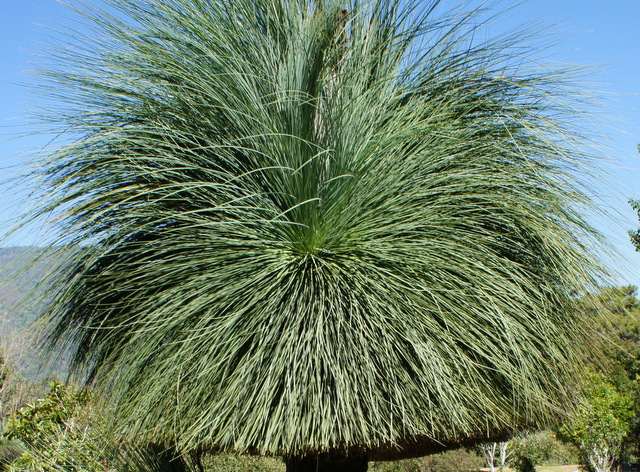Xanthorrhoea, famously known as the Grass Tree, is an extraordinary plant native to Western Australia. This perennial belongs to the Xanthorrhoeaceae family and is identifiable by its striking appearance and yellow resin, which it secretes upon stem damage. Known for its resilience and unique growth patterns, Xanthorrhoea’s allure lies not just in its peculiar aesthetics but also in its historical significance and adaptability. Whether you’re cultivating it for symbolic beauty or historical fascination, Xanthorrhoea requires specific care to thrive, especially outside its native environment.
Characteristics and Growth Patterns
In its natural habitat, Xanthorrhoea can reach an impressive height of up to 4 meters, albeit at an extremely slow growth rate of 0.9 to 2.5 cm per year depending on the soil quality. A plant that stands at a mere 1 meter could be over a century old. The initial years of growth are critical as lignification begins only after four to five years. Over a timeline of up to 30 years, a full-grown Grass Tree evolves from short stems and long leaves to a robust trunk that continues to charm the landscape for up to 600 years.
Optimal Environmental Conditions
Xanthorrhoea is inherently resilient to a wide range of temperatures, thriving optimally at 68°F. It can endure short bouts of freezing temperatures and extreme heat, making it a versatile plant for different climates. Despite its adaptability, it prefers bright light, though it can grow in penumbra conditions, thus allowing some flexibility in its placement in gardens and indoor settings.
Soil and Water Requirements
The Grass Tree thrives in well-drained, breathable soil, composed of equal parts of soddy land, leafy earth, coarse sand or perlite, and peat. Enhancing the soil with gravel or broken bricks can further improve aeration and drainage. Although it is accustomed to the poor stony soils of its native environment, a slightly richer substrate can accelerate its growth. It is important to water the plant only when the soil dries to a depth of about 5 cm, with care to avoid water stagnation.
Fertilization and Nutrient Needs
Xanthorrhoea does not demand excessive fertilization and can be sensitive to high phosphorus levels. A moderate use of slow-release fertilizers is recommended, along with occasional potassium sulfate or cow dung. Overfeeding with fertilizers high in phosphorus can prove toxic, so it’s wise to err on the side of caution.
Propagation Techniques
Propagation of Xanthorrhoea is primarily through seeds, which can be sown in an organic substrate, comprising peat and sand, to a depth of 3-6 mm. Using a mixture of sand and perlite is also effective, though seedlings should be transplanted into a suitable soil mix once they germinate. Maintaining a moist (not wet) substrate encourages germination, which can take as little as two weeks or, more rarely, up to a year.
Challenges and Pest Management
Xanthorrhoea is susceptible to common pests like spider mites, mealy worms, and scales. Regular checks and adjustments in care routines can manage these issues effectively. Additionally, the plant’s leaves live for 2-3 years, and regular removal of dry or fallen leaves is necessary to prevent fungal infections. This includes trimming dry brown tips to encourage new growth.
Historical and Cultural Significance
Xanthorrhoea holds a rich historical value, especially to Australian Aboriginals who utilize the plant’s resin for crafting and repair. The resin is heated and molded into balls, and used as adhesive for tools and weapons. The inflorescences produce a sweet nectar, and dried flowers function as fire starters. Interestingly, European settlers recognized the resin as a valuable resource for lacquer production during World War II, utilizing it as a protective layer for canned goods.
While Xanthorrhoea symbolizes resilience and adaptability, it also poses certain toxic risks as the plant’s leaves can be harmful to animals. Handling this plant requires care, particularly when considering its potential toxicity.
Endearing yet demanding, Xanthorrhoea is best suited for those willing to invest time and patience into its cultivation. Its ability to adapt to various climates, alongside its remarkable lifecycle, makes it a prized possession for gardeners and botanists alike. Embracing this ancient marvel adds not just a touch of exotic Australia to your garden, but also a slice of history and tradition.






